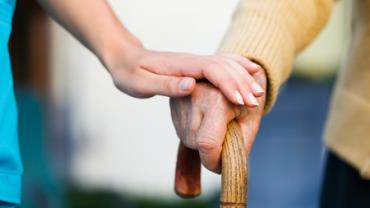
Adults between the ages of 40 and 80 experience between 30% - 60% muscle mass loss and this age-related muscle loss also known as sarcopenia is associated with disability illness and even death.
According to a new study published last week in the journal Calcified Tissue International sarcopenia has been associated with an increased risk of falling and bone fractures. This is really not new news. However there is no official criteria to diagnose sarcopenia and to identify individuals at risk. There are several organizations with varying definitions and criteria; however an accurate diagnosis of this condition is still missing. Now as a result of the study researchers reported that the International Working Group on Sarcopenias (IWGS) definition appears to be an effective means of identifying individuals at risk of sarcopenia and adverse musculoskeletal events such as falls and fracture. This was not the case for the criteria identified by other organizations.
In this study researchers found that most cases of sarcopenia were associated with significantly higher numbers of falls in the last year along with prevalent fractures. These findings emphasize the importance of prevention strategies and effective treatment options against musculoskeletal aging strategies which include lifestyle and nutritional support. For instance it is crucial that practitioners understand the underlying physiological factors and acknowledge that resistance training should be considered as a viable treatment option for these individuals.
Nutrition Support
Last month I shared a study demonstrating that vitamin D supplementation can significantly increase muscle strength and reduce the loss of muscle mass in postmenopausal women. The researchers had concluded that vitamin D supplementation alone provided significant protection against sarcopenia with significant increases in muscle strength and control of progressive loss of lean mass. This study offers further evidence to support the use of vitamin D in an effort to reduce the risk of falling and provide health benefits.
There was also a previous study published three months ago in the Journal of the American Geriatrics Society which reported that vitamin D supplementation was effective in increasing vitamin D concentrations and reducing the risk of falling.
While vitamin D supplementation is a cost-effective intervention that helps to reduce falls provide health benefits and can lower health care costs it is important to note that it is not the only key player. Health care providers should consider recommending branched-chain amino acids (BCAAs) to preserve lean tissue mass especially for those at-risk individuals who are unable to exercise. It is also vital to assess other nutrients such as calcium magnesium vitamin K and other trace minerals for deficiencies and support those accordingly.
By Michael Jurgelewicz DC DACBN DCBCN